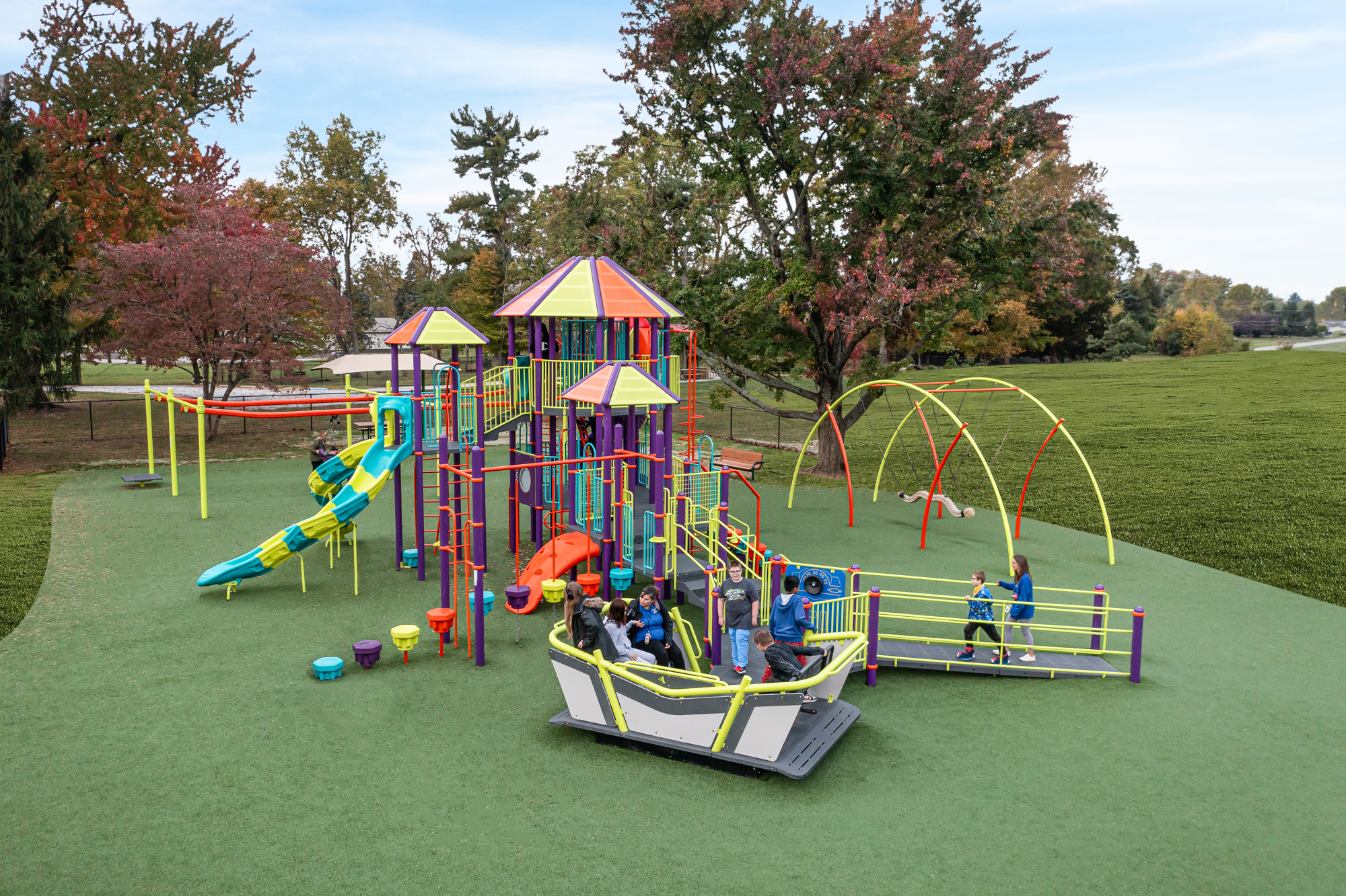Introduction: Playgrounds are more than just spaces for children to burn off energy; they are vital for fostering physical, social, and cognitive development. Creating the perfect playground involves a thoughtful combination of safety, creativity, and engagement. In this blog, we'll explore the essential elements that contribute to designing an ideal playground for children of all ages.
-
Safety First: Safety is paramount when designing a playground. Utilize impact-absorbing materials, such as artificial turf, beneath play structures to reduce the risk of injuries from falls. Regular inspections and maintenance should be conducted to ensure equipment remains in good condition.
Enclose the area with secure fencing to prevent unauthorized access, and choose equipment with rounded edges and no sharp points to minimize injury risks.
-
Age-Appropriate Zones: Different age groups have varying needs and abilities. Designate specific areas for different age ranges to ensure that the equipment and activities are suitable for the developmental stage of the children. Toddlers may benefit from low, crawl-friendly structures, while older kids might enjoy climbing walls and more challenging structures.
-
Inclusive Design: Create an inclusive environment that accommodates children with diverse abilities. Install ramps and wheelchair-accessible pathways to ensure that all children can access and enjoy the playground. Choose equipment that caters to different sensory needs, promoting an inclusive and welcoming atmosphere for all.
-
Creative and Imaginative Play: Foster creativity by incorporating elements that encourage imaginative play. Consider themed play structures, such as castles, pirate ships, or space stations, to spark children's imaginations. Incorporate natural elements like rocks, trees, and water features to enhance the overall play experience.
-
Varied Play Elements: Ensure a mix of play elements to cater to different interests and preferences. Include swings, slides, climbing structures, sandboxes, and sensory play. This variety encourages children to engage in different types of play, promoting holistic development.
-
Shade and Seating: Provide shaded areas for parents and caregivers to comfortably supervise their children. Install benches, picnic tables, or even shaded pavilions to create spaces where families can relax and enjoy the playground environment together.
-
Sustainable Design: Incorporate sustainable materials and eco-friendly features in the playground design. Consider using recycled materials for play structures, implement energy-efficient lighting, and design landscaping that requires minimal water usage. This not only benefits the environment but also sets a positive example for the community.
-
Community Input: Involve the community in the design process. Gather input from parents, teachers, and residents to understand the needs and preferences of the community. This collaborative approach ensures that the playground reflects the values and desires of those who will be using it.
Designing the perfect playground is a balance between safety, creativity, inclusivity, and community involvement. By prioritizing these elements, you can create a space that not only meets the physical and developmental needs of children but also becomes a vibrant and cherished hub for the community. A well-designed playground not only promotes active play but also fosters a sense of community, making it a valuable asset for generations to come. Contact Churchich Recreation today to get started!
